Shanghai Ocean University is a multidisciplinary applied research university jointly established by the Shanghai Municipal People's Government, the State Oceanic Administration, and the Ministry of Agriculture and Rural Affairs. In September 2017, it was selected as a national “World-class Discipline Construction University”. In February 2022, it was selected into the second round of "Double First-Class" construction universities and construction disciplines. The school’s motto: Diligence, Simplicity and Loyalty was established on September 1, 1914. The original intention of the founding of the school: Wherever the fishing industry goes, so does the sea power. School tradition: write thesis on the rivers and lakes of the motherland and the oceans of the world. The school’s predecessor was the Jiangsu Provincial Fisheries School founded in 1912 by Zhang Jian and Huang Yanpei. It has gone through school names such as the Fisheries School of the National Central University College of Agriculture, Shanghai Municipal Wusong Fisheries College, and Shanghai Fisheries College. In 1952, it was upgraded to Shanghai Fisheries University, the first undergraduate fishery university in China. In 1972, it moved south to Jimei, Xiamen and was renamed Xiamen Fisheries College. In 1979, it moved back to Shanghai, restored Shanghai Fisheries College, and retained Xiamen Fisheries College. In 1985, it was renamed Shanghai Fisheries University. In 2008, it was renamed Shanghai Ocean University. The school has 12 colleges (departments), with nearly 12,000 full-time undergraduate students and more than 5,700 full-time postgraduate students. There are more than 1,500 faculty and staff, including more than 800 teaching and scientific research personnel, more than 500 people with senior professional and technical positions, 38 full-time national-level talents of various types (including 9 people who enjoy special allowances from the State Council), and 227 provincial and ministerial-level talents. . The school currently has 44 undergraduate majors, 8 national-level first-class undergraduate major construction sites, 15 municipal-level majors, 5 national specialty majors, 1 major that has obtained the IFT International Food Professional Certification, and 4 majors have passed the European ASIIN undergraduate engineering certification. 4 majors have passed the China Engineering Education Certification, and 1 has passed the Yangtze River Delta New Liberal Arts Education major certification. It has 11 national first-class courses, 36 Shanghai first-class courses, 3 national quality courses, 45 Shanghai quality courses, exemplary courses, 1 national-level teaching team, 4 municipal-level teaching teams, and 45 municipal-level courses. There are 7 ideological and political demonstration courses, 1 famous teaching teacher, and 4 demonstration teams. There are 2 national-level experimental teaching demonstration centers, 3 Shanghai experimental teaching demonstration centers, 179 undergraduate teaching practice bases, 3 national-level virtual simulation experimental teaching projects, and 13 Shanghai-level projects. Since 2013, he has won 1 second prize of the National Teaching Achievement Award, 1 special prize of Shanghai Teaching Achievement Award, 9 first prizes, and 17 second prizes. The school is one of the first batch of overall pilot schools for curriculum ideological and political education and teaching reform in Shanghai, the first batch of demonstration universities for deepening innovation and entrepreneurship education reform, the first batch of Shanghai demonstration schools for school management according to law, and the first batch of Shanghai curriculum and ideological and political teaching research demonstration centers. Selected as the leading college for the key ideological and political reform of the curriculum of Shanghai universities, the first batch of national university party building work model branches, and the first batch of national university “double leaders” teacher party branch secretary offices. The school is one of the first batch of "Easy Class" pilot units in the country, and has won the national special prize for outstanding achievements in campus culture construction in colleges and universities, and the first prize of the Shanghai Education Reform Experimental Award. The school's Mental Health Research and Education Center for College Students has been named "Shanghai University Mental Health Education and Counseling Demonstration Center" for three consecutive rounds, and has been selected as a typical case for the guidance of mental health education in universities by the Ministry of Education. The campus culture of the school is rich and colorful, with more than 90 various cultural, sports, and science and technology student societies such as the college student art troupe. It has won the gold medal of the "Creating Youth" National College Student Entrepreneurship Competition, the first prize of the "Challenge Cup" National College Student Extracurricular Academic Science and Technology Works Competition, and other awards. In the past five years, it has won 2 gold medals and 3 silver medals in the World Mind Olympics Finals, multiple gold and silver medals in national art exhibitions, and more than 60 municipal art competitions. He has won 8 awards of various types of social practice in the “Three Going to the Countryside” program across the country, and more than 40 awards of various types in the Shanghai “Zhixing Cup” social practice competition. There are cultural museums such as the School History Museum (including the Three History Museum and the College Student Campus Culture Exhibition Hall), museums (including the Aquatic Biotechnology Museum, the Whale Museum, the Ocean Fisheries Exhibition Hall, the "Rainbow Fish" Deep Sea Science Popularization Experience Base, and "China Fishery Policy 206"). Educational venues. The school currently has 4 first-level discipline doctoral degree authorization points, 14 first-level discipline master's degree authorization points, 1 second-level discipline master's degree authorization point, 8 professional degree master's degree authorization points, and 4 postdoctoral research mobile stations. It has 1 national first-class construction discipline, 1 national key discipline, 3 peak plateau disciplines in Shanghai universities, 3 first-class disciplines in Shanghai universities, and 9 provincial and ministerial key disciplines. The six disciplines of plant and animal sciences, agricultural sciences, environment/ecology, engineering, biology and biochemistry, and earth sciences have entered the top 1% of the world in the ESI international subject rankings, and the fishery disciplines have ranked in the fourth and fifth rounds of national subject evaluations. Earned an A+ rating. It has more than 30 provincial and ministerial key laboratories and platforms such as the United Nations Food and Agriculture Organization Aquatic Ecoculture Center (CEA), the National Engineering Technology Research Center, the National Engineering Laboratory, the International Joint Research Center of the Ministry of Science and Technology, the National University Science and Technology Park, and the Ministry of Education. It has established a number of school-level scientific research centers such as the Aquatic Biological Breeding Research Center, the Extreme Ocean Processes and Resources Research Center, the Marine Think Tank Research Center, the International Ocean Research Center, the China-Australia International Cooperation Research Center, the Ocean Fisheries International Contract Fulfillment Research Center, and the Institute of Marine Science. platform. It owns China's first offshore fishery resource survey ship "Songhang", China's only ship ballast water laboratory certified by CNAS, CMA, DNV GL and USCG. It has built Asia's largest hydrodynamic tank and the world's third largest, and developed 10,000-meter The first-stage lander successfully reached the 10,918-meter abyss. It is the guiding unit of Shanghai Fisheries Society, Shanghai Food Society, and Shanghai Fishery Economic Research Society. Since 2011, it has achieved a number of breakthrough research results in natural sciences, humanities and social sciences, and won 1 national Science and Technology Progress Award and 36 provincial and ministerial awards as the first completed unit. The school gives full play to its distinctive advantages in disciplines and scientific research and has made remarkable achievements in serving society. Since 2011, he has guided farmers in Miaoli County, Taiwan, to breed hairy crabs, creating an example of cross-strait agricultural cooperation; he has established a "Fishery Science and Technology Professor and Doctoral Service Team" to provide scientific and technological services across the country, assisting Tibet, Xinjiang, Shaanxi, Guizhou and other places in targeted poverty alleviation, with remarkable results. , the project was selected into the Ministry of Education’s second and fifth provincial universities’ targeted poverty alleviation typical projects; the distant-water fishery international contract implementation team has been fully responsible for the implementation of regional fishery management conventions on behalf of the country since the 1990s, in order to safeguard the rights and interests of China’s distant-water fisheries He made important contributions and was selected into the first batch of "National University Huang Danian Teacher Team". The school currently has two campuses, the Hucheng Ring Road Campus in Pudong New District, Shanghai, and the Jungong Road Campus in Yangpu District. It also has a Binhai Base of 386 acres and a Xiangshan Science and Education Base of 56.7 acres. Among them, the main campus, Hucheng Ring Road Campus, covers an area of about 1,600 acres, with a planned construction area of 586,000 square meters. It has a modern campus network and has built the China Distant Ocean Fisheries Data Center and Marine Science Supercomputing Center. There are currently more than 1.67 million paper books, nearly 1.12 million electronic books, and 106 databases. The collection resources highlight the school’s marine, aquatic products, and food characteristics. In 2016, it hosted the first English-language aquaculture journal in mainland China, Aquaculture and Fisheries, which was included in Scopus, the American Life Sciences Abstracts Index Database (BP), Biology Abstracts (BA), and the Chinese Science Citation Database (CSCD) core database. The "Journal of Fisheries" and "Journal of Shanghai Ocean University" sponsored by the school are Chinese core journals, core journals of Chinese science and technology and core journals of China Science Citation Database (CSCD). Among them, "Journal of Fisheries" was awarded "National Top 100 Newspapers" and "China's Excellent Journals" Titles such as "One Hundred Outstanding Chinese Academic Journals". The school actively expands foreign cooperation and has close exchanges and cooperation with universities in the United States, Japan, South Korea, Germany, Portugal, Australia, Ghana and other countries (regions), as well as international organizations such as the Food and Agriculture Organization of the United Nations (FAO) and the Asian Fisheries Society (AFS). Signed cooperation agreements with more than 140 overseas universities and scientific research institutions. Since 2011, more than 4,000 students have been sent out through study tours, study abroad, exchange students, etc.; it has been selected as the "Asian Campus" of China, Japan and South Korea for two consecutive periods, and has been approved by the China Scholarship Council for innovative talent international cooperation training projects and other projects, and has cooperated with Spain and Portugal. The Erasmus program for mutual credit recognition in other universities provides a platform for Chinese and foreign teachers and students to further expand their international horizons, cultivate international communication skills, and enhance international competitiveness. The development goal of the school in the new era is: by 2035, it will become a high-level characteristic university with important international influence. By the middle of this century, the school will be built into a world-class characteristic university.
-

Tsinghua University
-

Peking University
-

Fudan University
-

Wuhan University
-

Zhejiang University
-

Nanjing University
-

Sun Yat-sen University
-

Tongji University
-

Renmin University of China
-

Jahrom University of Medical Sciences
-

Mesoamerican University
-

Istmo University
-
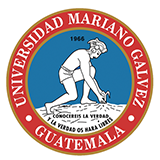
Mariano Galvez University of Guatemala
-
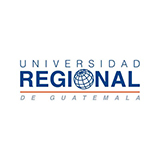
Regional University of Guatemala
-
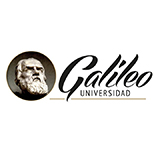
Galileo University
-
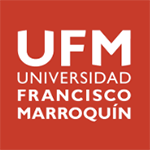
Francisco Marroquín University
-

Rafael Landívar University
-
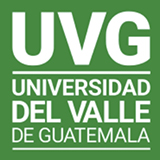
University of the Valley of Guatemala
-
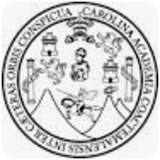
University of San Carlos of Guatemala
-

Technological Institute of Tlaxcala Plateau
-

Golfo University
-
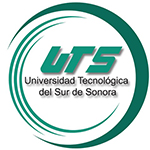
Technological University of South Sonora
-
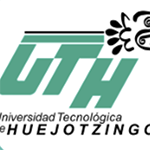
Technological University of Huejotzingo
-

Tizimín Institute of Technology
-
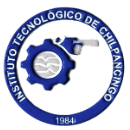
Chilpancingo Institute of Technology

